Vietnam has a unique, long-standing culture associated with the history of formation and development of the nation. The Vietnamese people and the community of 54 ethnic groups have long-standing customs, there are festivals with meaningful community activities, stable beliefs in beliefs, religions, strictness and metaphor in communication. reach of language, from traditional to modern literature and art.
Vietnam has a rich and diverse culture in all aspects:
Philosophy and thought
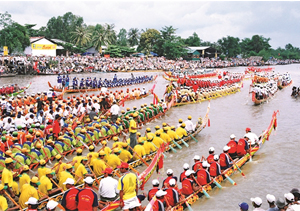 Derived from the agricultural culture, and related to natural phenomena, Vietnamese philosophical thought pays special attention to relationships, the typical product is the five elements yin and yang theory and The most concrete manifestation is the balanced lifestyle towards harmony.An agricultural society is characterized by the village community with many protracted primitive remnants creating the unique character of Vietnamese people. It is a dualism, a specific way of thinking, inclined to emotional experience, preferring images to concepts, but flexible, flexible, easy to adapt, and adaptable. It is a way of life with heavy gratitude, solidarity with relatives and villages. It is a way of acting according to the tendency to settle harmoniously, to balance, to rely on relationships, at the same time, to be skillful in improvisation, having been known many times to take the need to win, to take the weak against strong in history. In the spiritual value ladder, Vietnam emphasizes the word Nhan, closely associates Nhan with Nghia, Nhan with Duc, inhuman means meaninglessness. Vietnam understands the Chinese word is Chinese to water, higher than Chinese to the king, respect the word Hieu but not too narrow in the family framework. The word Phuc is also at the top of the value of life, people praise the family is more blessed than the rich, the praise.
Derived from the agricultural culture, and related to natural phenomena, Vietnamese philosophical thought pays special attention to relationships, the typical product is the five elements yin and yang theory and The most concrete manifestation is the balanced lifestyle towards harmony.An agricultural society is characterized by the village community with many protracted primitive remnants creating the unique character of Vietnamese people. It is a dualism, a specific way of thinking, inclined to emotional experience, preferring images to concepts, but flexible, flexible, easy to adapt, and adaptable. It is a way of life with heavy gratitude, solidarity with relatives and villages. It is a way of acting according to the tendency to settle harmoniously, to balance, to rely on relationships, at the same time, to be skillful in improvisation, having been known many times to take the need to win, to take the weak against strong in history. In the spiritual value ladder, Vietnam emphasizes the word Nhan, closely associates Nhan with Nghia, Nhan with Duc, inhuman means meaninglessness. Vietnam understands the Chinese word is Chinese to water, higher than Chinese to the king, respect the word Hieu but not too narrow in the family framework. The word Phuc is also at the top of the value of life, people praise the family is more blessed than the rich, the praise.
Customs and practices
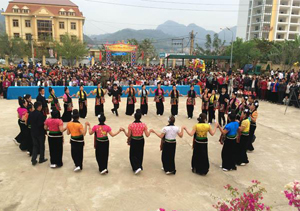
Vietnam is a country of year-round festivals, especially in the springtime, leisure time. The main festivals are the Lunar New Year, the Full Moon Festival in January, the Korean lunar eclipse, the lunar new year, the full moon festival in July, the Mid-Autumn Festival, the Ong apple festival … Each region often has its own festival, the most important one is the agricultural festival. industry (pray for rain, go to field, new rice …), career festivals (bronze casting, forging, firecrackers, boat racing …). In addition, there are festivals celebrating heroes who have made merit to the country, and religious and cultural festivals (pagodas). The festival has 2 parts: the ceremony is meant to pray and give thanks, the festival is a community cultural activity including many games, folk competitions.
Vietnamese cuisine
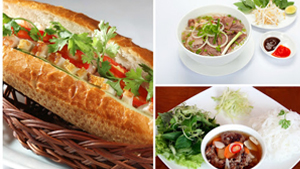 Vietnamese people are practical, prefer to eat and wear durable. The first is to eat, to be able to practice religion, God beat me to avoid meals. The eating structure is biased towards plants, the main vegetable is rice plus seafood. The way of processing the dish is rich in synthesis, combining many ingredients and spices.
Vietnamese people often use fabric materials of vegetable origin, thin, light, airy, suitable for hot country, with brown, indigo and black colors.
Vietnamese people are practical, prefer to eat and wear durable. The first is to eat, to be able to practice religion, God beat me to avoid meals. The eating structure is biased towards plants, the main vegetable is rice plus seafood. The way of processing the dish is rich in synthesis, combining many ingredients and spices.
Vietnamese people often use fabric materials of vegetable origin, thin, light, airy, suitable for hot country, with brown, indigo and black colors.
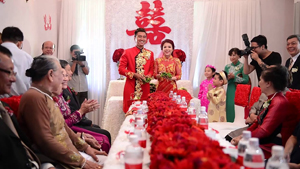
The Vietnamese customs of marriage, funerals, festivals and festivals are all associated with village community. Marriage is not only a need for couples, but also has to meet the interests of the family, family, village, choose a good day and a good day, go through many ceremonies from an alley, begging: Mating is a ceremony Official newspaper about the union of the two families and the two families. Today, the ceremony of asking questions has been reduced but the main parts are still maintained in accordance with the ritual.
Belief and religion
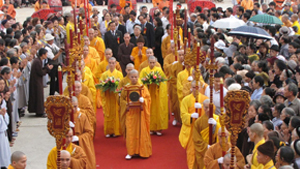 In Vietnam, such beliefs lasted for a long time, the most popular being ancestor worship, almost becoming a religion of the Vietnamese people (called Dao Ong Ba in the South). In Vietnam, the date of death is more of an anniversary than the date of birth. Every house worships Tho Cong, which is the god that looks after the house, preserves the blessings of the whole family.
In Vietnam, such beliefs lasted for a long time, the most popular being ancestor worship, almost becoming a religion of the Vietnamese people (called Dao Ong Ba in the South). In Vietnam, the date of death is more of an anniversary than the date of birth. Every house worships Tho Cong, which is the god that looks after the house, preserves the blessings of the whole family.
There are also many religions in Vietnam, almost imported from abroad into Vietnam such as Buddhism, Confucianism, Taoism, … The external religions imported into Vietnam do not lose people’s beliefs. indigenous space that blends together makes both sides have certain metamorphosis.
Language
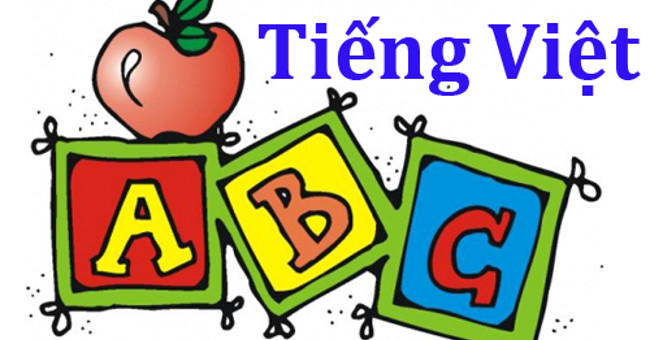 About Vietnamese origin, there are many theories. The hypothesis is most convincing: Vietnamese belongs to the Mon-Kh’mer lineage of the Southeast Asian linguistic family. In modern Vietnamese, there are many words that are proven to have Mon-Khmer origin and are phonetic and semantical when compared with Muong language.Over a thousand years under the Northern domination, and under feudal dynasties, the official language was Han script, but it was also the time that Vietnamese language proved its vitality to fight for self-preservation and development. During the French colonial period, Chinese characters were gradually removed and replaced with French used in the language of administration, education and diplomacy. But thanks to Quoc Ngu script, which has the simple advantage of structure, writing, reading, and modern Vietnamese prose really formed and favorably received the positive influences of Western cultural language.The script of national language is the product of some Western clergy, including Alexandre de Rhodes who cooperated with a number of Vietnamese who relied on the Latin alphabet to record Vietnamese for missionary use in the 17th century. language has been gradually improved, universalized, and become an important cultural tool. After the 1945 August Revolution, Vietnamese language and national language gained a unique position, developed abundantly, being a versatile language used in all fields, at all levels, reflecting all realities of life. Characteristics of Vietnamese: monosyllabic but specific vocabulary, rich, rich in visual tones, proportional expression, rhythmic, lively, convertible, symbolic, expressive, very convenient. for literary art creation.
About Vietnamese origin, there are many theories. The hypothesis is most convincing: Vietnamese belongs to the Mon-Kh’mer lineage of the Southeast Asian linguistic family. In modern Vietnamese, there are many words that are proven to have Mon-Khmer origin and are phonetic and semantical when compared with Muong language.Over a thousand years under the Northern domination, and under feudal dynasties, the official language was Han script, but it was also the time that Vietnamese language proved its vitality to fight for self-preservation and development. During the French colonial period, Chinese characters were gradually removed and replaced with French used in the language of administration, education and diplomacy. But thanks to Quoc Ngu script, which has the simple advantage of structure, writing, reading, and modern Vietnamese prose really formed and favorably received the positive influences of Western cultural language.The script of national language is the product of some Western clergy, including Alexandre de Rhodes who cooperated with a number of Vietnamese who relied on the Latin alphabet to record Vietnamese for missionary use in the 17th century. language has been gradually improved, universalized, and become an important cultural tool. After the 1945 August Revolution, Vietnamese language and national language gained a unique position, developed abundantly, being a versatile language used in all fields, at all levels, reflecting all realities of life. Characteristics of Vietnamese: monosyllabic but specific vocabulary, rich, rich in visual tones, proportional expression, rhythmic, lively, convertible, symbolic, expressive, very convenient. for literary art creation.
Literary
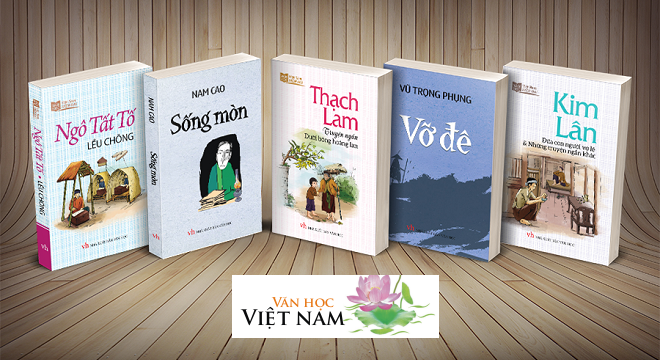 Parallel development, profound interaction: Vietnamese literature appeared quite early, with two components: folk literature and written literature. Folklore occupies an important position in Vietnam, has great merit in preserving the development of the national language, nurturing the people’s soul. Folk compositions include myths, epics, legends, tales, jokes, puzzles, proverbs, folk songs … with many colors of ethnic groups in Vietnam.
Parallel development, profound interaction: Vietnamese literature appeared quite early, with two components: folk literature and written literature. Folklore occupies an important position in Vietnam, has great merit in preserving the development of the national language, nurturing the people’s soul. Folk compositions include myths, epics, legends, tales, jokes, puzzles, proverbs, folk songs … with many colors of ethnic groups in Vietnam.
Written literature was born around the 10th century. Until the early 20th century, there were also two parallel parts: Chinese characters (with poetry, prose, expressing Vietnamese soul, reality, so it was still literature. Vietnamese) and Nôm (almost only poetry, handed down many great works). From the 20s of the 20th century, the written literature was mainly composed in Vietnamese through the national script, with a profound innovation in genres such as novels, new poems, short stories, plays … and diversified in artistic trends, at the same time developing at a rapid speed, especially after the August Revolution followed the leadership of the Communist Party of Vietnam, towards the fighting life and labor of the people.
Art
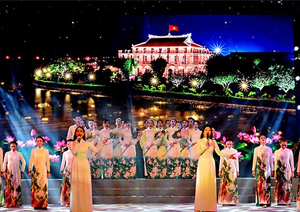
Vietnam has about 50 ethnic musical instruments, of which percussion is the most popular, the most diverse and the oldest originating (bronze drums, gongs, rock instruments, rut …). The most popular set is the khene flute, while the most unique string set has a calf and bottom.
Vietnamese folk songs and genres are plentiful throughout the Central, South, and North: from reciting poems, lullabies, singing to mandarin singing, drum force, oval, dipper, Hue song, log cabin, ly. In addition, there is also singing xam, chau van, ca tru.
Traditional theater art has chèo and opera. Water puppetry is also a unique traditional theatrical form dating back to the Ly dynasty. In the early 20th century, there appeared Cai Luong in the South with old aspirations.
In Vietnam, the art of carving stone, bronze, and terracotta pottery was born very early dating back 10,000 years BC. Later on, enameled ceramics, wooden statues, inlays of pearls, lacquerware, silk paintings and paper paintings developed to a high artistic level.
There have been 2014 cultural and historical relics recognized by the State and two internationally recognized monuments, Hue and Ha Long Bay. The remaining ancient architecture is mainly a number of pagodas – towers of the Ly – Tran dynasty; Palace-stele in Le dynasty, communal house in 18th century, citadel – tomb of Nguyen dynasty and Cham towers.
In the 20th century, exposed to Western culture, especially after the independence of the country, new types of arts such as theater, photography, cinema, music and modern arts were born and developed. strong, obtained great achievements with content reflecting the reality of life and revolution.
Currently, the cultural renewal is continuing.
